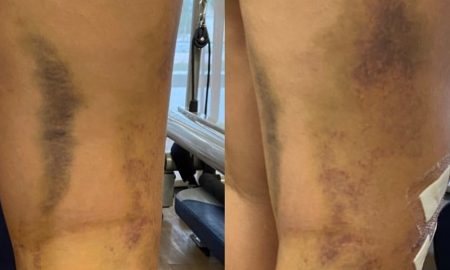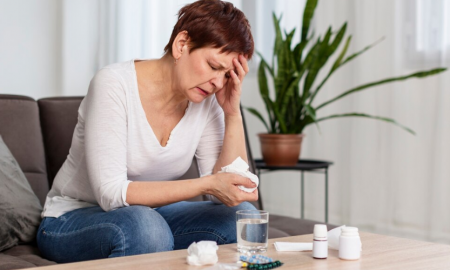
6 Health Conditions That Reveal the Women’s Health Gap in Healthcare

Gender inequality is an issue that extends beyond the social, political, and economic spheres—it deeply affects healthcare too. Research shows that women spend 25% more of their lives in debilitating health compared to men. Despite advancements toward gender parity, there is still a notable gap in healthcare that affects women globally. This disparity not only results in misdiagnoses and delayed treatments but also costs billions in economic growth potential. Here’s a comprehensive look at the women’s health gap and six conditions that demonstrate this inequality.
What Is the Women’s Health Gap?
The women’s health gap refers to the inequalities in the healthcare system, where women are often underdiagnosed, misdiagnosed, or delayed in receiving care for several conditions. These disparities range from limited access to care and gender biases in medical research to differences in treatment approaches.

Freepik | Women’s health disparities often result in underdiagnosis, misdiagnosis, and delayed care.
For instance, it’s estimated that the women’s health gap results in 75 million years of life lost annually due to poor health or premature death. Addressing this gap would grant women an additional 500 healthy days over their lifetime. Moreover, the economic cost is staggering—bridging this gap could contribute an extra $1 trillion to the global economy by 2040, primarily through reducing early deaths and increasing women’s capacity to contribute to society.
The Impact of Gender Bias in Healthcare
A persistent gender bias in healthcare contributes to the women’s health gap. A 2024 study found that women are 10% less likely than men to have their pain assessed when admitted to a hospital. Additionally, women often experience longer wait times to see a doctor and are less likely to receive pain relief medication. These biases can lead to serious consequences, resulting in delayed treatments and worse health outcomes for women.
Another study from Denmark indicated that women are diagnosed with certain conditions, such as diabetes and cancer, up to four years later than men. These delays in diagnosis and treatment can significantly impact women’s quality of life and longevity.
6 Conditions That Highlight the Gender Health Gap
Despite the growing awareness of these inequalities, women continue to be underdiagnosed or misdiagnosed for several conditions. Here are six examples of diseases that highlight this disparity:
1. Cardiovascular Disease (CVD)
Cardiovascular disease is the leading cause of death in women, yet it is often perceived as a “man’s disease.” This misconception contributes to women being underdiagnosed and undertreated for heart-related conditions. Women experience heart disease differently than men, with symptoms that are less likely to be recognized by healthcare professionals.
For example, women tend to have smaller hearts and faster heartbeats, but these differences are often overlooked in treatment protocols. Studies also show that women are less likely to receive diagnostic procedures, such as coronary angiograms, after a heart attack, which can lead to delayed or incorrect treatments.
2. Endometriosis
Endometriosis, a condition where tissue similar to the lining inside the uterus grows outside it, is often referred to as the “missed disease.” Affecting 10% of women of reproductive age globally, it takes an average of seven years to diagnose in the U.S. Black women face even longer delays in diagnosis, exacerbating the condition’s impact on their health and quality of life.
The slow pace of diagnosis is largely attributed to a lack of understanding and awareness about the condition, with many women being told that their symptoms are a normal part of being female. This dismissal has long-term consequences on physical and emotional health.
3. Autism
Autism spectrum disorder (ASD) is another condition where gender bias plays a role in underdiagnosis. While boys are more commonly diagnosed with autism, research shows that girls often display different symptoms that are less easily recognized. This leads to delayed or missed diagnoses in females.
Girls with autism are more likely to “mask” their symptoms by adapting to societal expectations, making it harder for healthcare providers to identify the disorder. These diagnostic delays can lead to mental health problems in adulthood, further widening the healthcare gap.
4. ADHD (Attention Deficit Hyperactivity Disorder)

Freepik | Women with ADHD are often diagnosed later than men, causing lifelong challenges.
Like autism, ADHD is often underdiagnosed in women due to gender biases in the way symptoms are perceived. Women with ADHD are often diagnosed later in life than men, leading to a lifetime of untreated symptoms that can affect personal and professional development.
Recent studies show that while men are still more likely to be diagnosed with ADHD, the gap between the genders is narrowing as awareness grows about the unique ways in which ADHD presents in women. However, more research and education are needed to ensure timely and accurate diagnoses.
5. Autoimmune Diseases
Autoimmune diseases disproportionately affect women, with 80% of all patients diagnosed being female. These conditions, which include lupus, multiple sclerosis, and rheumatoid arthritis, can take years to diagnose. Despite their prevalence, autoimmune diseases receive relatively little research funding compared to other major disease categories.
Research from Stanford University suggests that certain molecules present only in women may trigger autoimmune responses, potentially explaining why these conditions are more common in women. This finding highlights the need for more female-specific medical research to improve diagnosis and treatment options.
6. Antimicrobial Resistance (AMR)
Antimicrobial resistance (AMR) is an escalating global health threat that could lead to 10 million deaths each year by 2050. Although AMR impacts everyone, women encounter specific risks linked to their reproductive health treatments and childbirth, which often involve frequent antibiotic use. This overuse and misuse of antibiotics contribute to drug resistance, making it increasingly difficult to treat infections and other medical conditions.
To effectively tackle the health gap associated with AMR, a gender-sensitive approach to healthcare is essential. This approach should ensure that women receive the appropriate care they need and that research focuses on developing alternative treatments to antibiotics.
Bridging the Women’s Health Gap
Closing the gender health gap is critical not only for the well-being of women but also for the overall health and economic prosperity of societies. Addressing this gap requires:
1. Increased Research Funding for Women’s Health – More investment is needed in female-specific health research to ensure that diagnostic tools, treatments, and interventions are designed with women in mind.
2. Improved Access to Healthcare – Policymakers must work to eliminate barriers to healthcare access for women, especially those from marginalized communities.
3. Gender-Specific Data Collection – Medical research should consistently collect and analyze data based on gender to understand how diseases affect men and women differently.
4. Educating Healthcare Providers – Medical professionals need ongoing training to recognize and treat diseases in women more effectively. This includes addressing biases that may affect diagnostic and treatment decisions.
More in Medical Conditions
-
Hematoma vs Bruise: What Is the Difference?
When it comes to injuries, hematoma vs bruise are often used interchangeably, but they refer to different medical conditions. Understanding the...
June 12, 2024 -
What Is Unipolar Depression? Here’s What You Need to Know Right Now
Depression casts a long shadow over many lives, with symptoms that affect everything from our energy levels to our ability to...
June 7, 2024 -
A Comprehensive Guide on How to Heal Anxious Attachment Style
If you often find yourself seeking constant reassurance from your partner or requiring endless validation to feel secure, you may be...
June 1, 2024 -
Why Is My Skin Peeling on My Face After Skincare? Here’s What You Need to Know
Experiencing skin peeling on your face after implementing a skincare routine can be perplexing and frustrating. This phenomenon, where the skin...
May 23, 2024 -
What Is a Mental Edge, and How Do You Get It?
Have you ever wondered why some individuals seem unshakably confident under intense pressure, finding a way to excel when it matters...
May 15, 2024 -
When to Worry About Varicose Veins? Here’s What You Need to Know
Varicose veins are a common issue, affecting about 20% of adults. They’re usually seen as unsightly blemishes on the legs but...
May 12, 2024 -
Why Is Discipline Important: The Ultimate Guide to the Importance of Discipline
Discipline is undoubtedly one of life’s most crucial character traits. It shapes how we approach tasks, manage our time, and...
May 3, 2024 -
Have I Fallen Out of Love or Am I Depressed? Everything You Need to Know
Have I fallen out of love or am I depressed? You’re not alone in this query. In the diversity of human...
April 26, 2024 -
What Does Lung Cancer Breath Smell Like?
Cancer is one of the most formidable diseases of our time, characterized by the uncontrolled growth of cells that invade and...
April 20, 2024















You must be logged in to post a comment Login